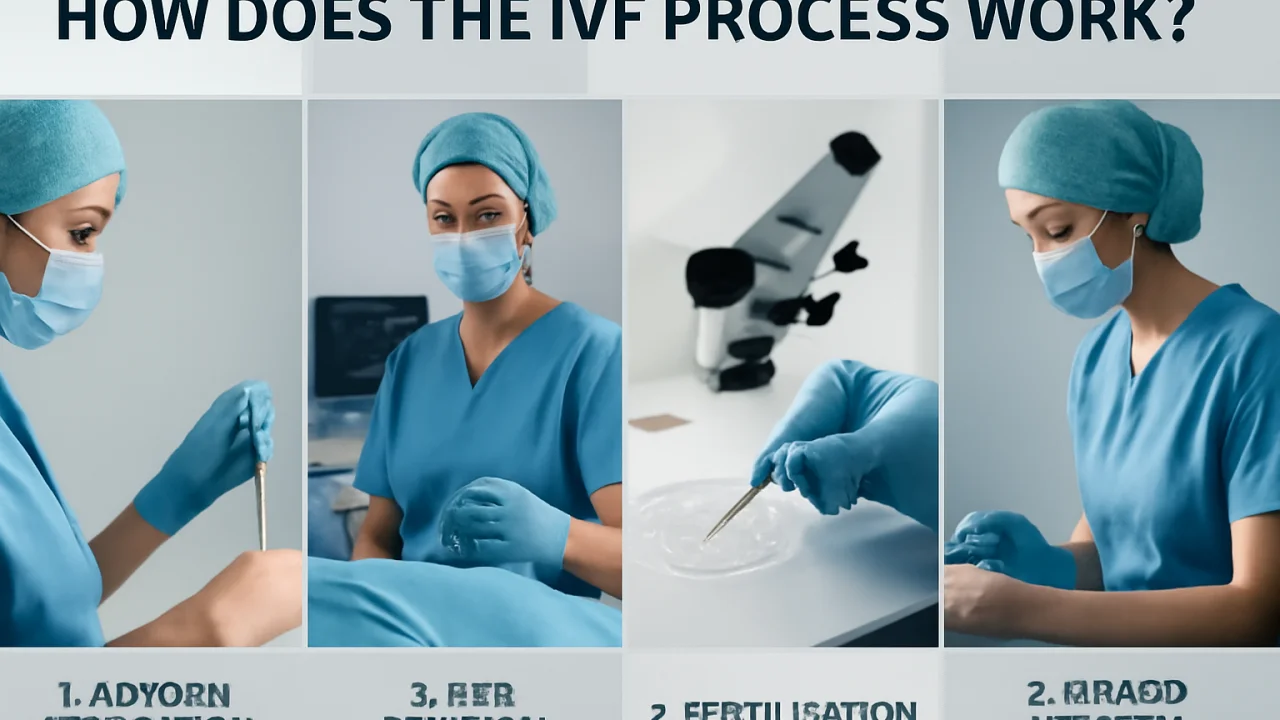
IVF (In Vitro Fertilization): A Comprehensive Guide to Success, Costs, and Expectations
📑 Contents
IVF (In Vitro Fertilization): A Comprehensive Guide to Success, Costs, and Expectations
In Vitro Fertilization (IVF) has revolutionized fertility treatment, offering hope to millions of couples and individuals worldwide. Whether you’re just starting to explore fertility options or considering IVF as your next step, understanding the process, costs, risks, and chances of success is essential. This comprehensive guide covers every aspect of IVF to help you make informed decisions on your fertility journey.
What Is IVF and Who Is It For?

IVF is an assisted reproductive technology (ART) where eggs are fertilized by sperm outside the body, and the resulting embryo is transferred into the uterus. Since the birth of the first IVF baby in 1978, the technology has become more advanced and accessible.
IVF may be recommended for individuals or couples facing:
- Tubal factor infertility (blocked or damaged fallopian tubes)
- Male factor infertility (low sperm count or motility)
- Endometriosis
- Unexplained infertility
- Genetic disorders (to prevent transmission)
- Ovulation disorders
- Same-sex couples or single parents wishing to conceive
How Does the IVF Process Work?

IVF involves several key stages, each designed to maximize the chances of a healthy pregnancy. Here’s a step-by-step overview:
- Ovarian Stimulation: Fertility medications stimulate the ovaries to produce multiple eggs.
- Egg Retrieval: Eggs are collected from the ovaries using a minor surgical procedure.
- Fertilization: Eggs are combined with sperm in a lab. Fertilization can be done conventionally or via ICSI (intracytoplasmic sperm injection), where a single sperm is injected into each egg.
- Embryo Culture: Fertilized eggs (embryos) are cultured for several days, typically 3 to 5, and monitored for development.
- Embryo Transfer: One or more healthy embryos are transferred into the uterus. Any extra embryos may be frozen for future use.
- Pregnancy Test: About 10–14 days after transfer, a blood test determines if implantation and pregnancy have occurred.
Success Rates: What Are Your Chances with IVF?

IVF success rates depend on several factors, including age, cause of infertility, clinic expertise, and specific treatment protocols. Generally, younger women have higher success rates due to better egg quality.
| Age Group | Live Birth Rate per Embryo Transfer |
|---|---|
| <35 years | 41–48% |
| 35–37 years | 33–38% |
| 38–40 years | 22–26% |
| 41–42 years | 12–15% |
| >42 years | 4–7% |
Other factors influencing IVF success include the cause of infertility, embryo quality, uterine health, and lifestyle factors like smoking, BMI, and stress levels. Some clinics report cumulative success rates—your chances improve over multiple cycles.
IVF Costs: What to Expect and How to Plan
IVF can be expensive, particularly in countries where insurance coverage is limited. It’s crucial to understand the costs involved and potential ways to finance treatment.
Key cost components include:
- Initial consultations and diagnostic tests
- Fertility medications (often $3,000–$6,000 per cycle)
- Egg retrieval and lab procedures
- Embryo transfer
- Additional services (ICSI, PGT/genetic testing, embryo freezing)
| Region | Average Cost per IVF Cycle | Common Inclusions/Notes |
|---|---|---|
| USA | $12,000–$18,000 | Medications and add-ons often extra |
| UK | £5,000–£8,000 | Some NHS coverage for eligible patients |
| Australia | AUD $9,000–$15,000 | Partial Medicare rebates may apply |
| India | ₹1,20,000–₹2,50,000 | Lower costs but variable quality |
Many clinics offer payment plans, package deals for multiple cycles, or IVF refund programs. Check your insurance policy for possible coverage and consider applying for fertility grants or loans if needed.
Risks and Side Effects of IVF
While IVF is generally safe, it does carry some risks and potential side effects:
- Ovarian Hyperstimulation Syndrome (OHSS): Over-response to fertility drugs can cause swollen, painful ovaries, and rarely, more severe symptoms.
- Multiple pregnancies: Transferring multiple embryos increases the chance of twins or higher-order multiples, which carry additional health risks for mother and babies.
- Egg retrieval risks: Though uncommon, bleeding, infection, or injury can occur.
- Emotional stress: IVF can be mentally and emotionally taxing, especially after unsuccessful cycles.
- Birth defects: Some studies suggest a slightly higher risk of birth defects, but overall risk remains low.
Most side effects are mild and temporary, but it’s important to discuss all risks with your fertility specialist.
Latest Advances and Add-Ons in IVF
IVF technology continues to evolve, offering new hope for those facing fertility challenges. Some notable advances and optional “add-ons” include:
- Preimplantation Genetic Testing (PGT): Screening embryos for chromosomal or genetic abnormalities before transfer.
- Time-lapse embryo imaging: Advanced incubators monitor embryo development to select the best ones for transfer.
- Egg freezing (vitrification): Allows women to preserve their fertility for the future.
- Embryo glue and assisted hatching: Techniques to improve implantation rates in certain cases.
- Personalized protocols: Tailored medication plans based on genetic and hormonal profiles.
While some add-ons are evidence-based, others may not significantly improve outcomes for everyone. Always discuss the benefits, risks, and costs of any additional procedures with your clinic.
Preparing for IVF: Practical Tips
Preparation can help improve your chances of success and make the process more manageable:
- Healthy lifestyle: Maintain a balanced diet, exercise regularly, and avoid smoking/alcohol.
- Supplements: Take prenatal vitamins, especially folic acid, as recommended.
- Stress management: Consider counseling, support groups, or relaxation techniques.
- Partner involvement: Male partners should also focus on a healthy lifestyle and avoid heat exposure to the testicles.
- Stay informed: Ask questions, read reliable information, and be proactive about your care.
Frequently Asked Questions about IVF
How many IVF cycles does it usually take to get pregnant?
Success can happen on the first try, but many people need 2–3 cycles. Cumulative success rates increase with multiple attempts, especially for younger women.
Is IVF painful?
Most people report mild discomfort during injections and some cramping after egg retrieval. Embryo transfer is usually painless.
Can I choose the sex of my baby with IVF?
Yes, through preimplantation genetic testing (PGT), it’s possible to determine and select the sex of embryos. However, this is only legal and ethical in certain countries and circumstances.
Does insurance cover IVF?
Coverage varies greatly by country and insurance provider. Some U.S. states mandate partial coverage, while others offer none. Always check your policy and local regulations.











